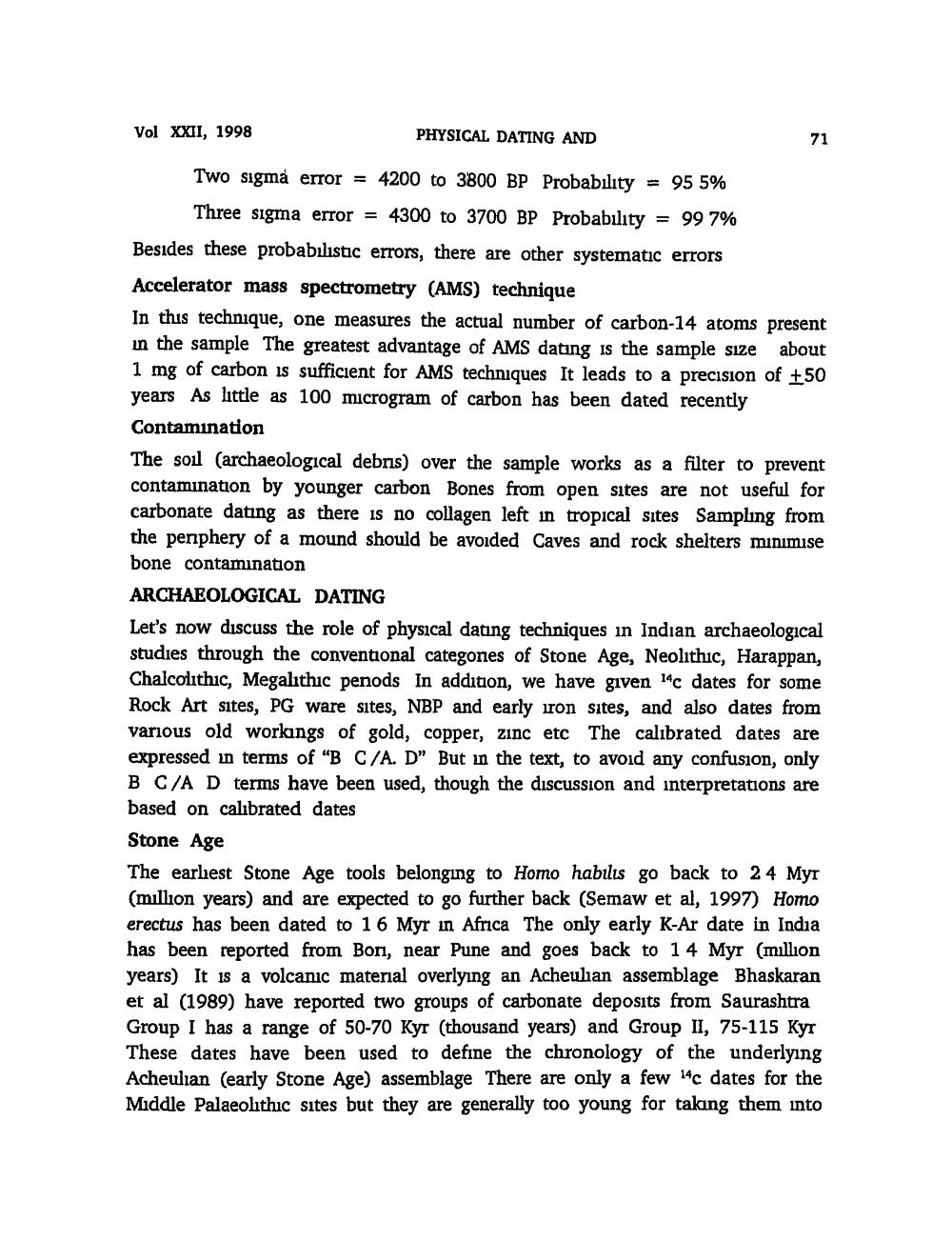________________
Vol XXII, 1998
PHYSICAL DATING AND
Two sigma error = 4200 to 3800 BP Probability = 95 5%
Three sigma error = 4300 to 3700 BP Probability = 99 7% Besides these probabilistic errors, there are other systematic errors Accelerator mass spectrometry (AMS) technique In this technique, one measures the actual number of carbon-14 atoms present in the sample The greatest advantage of AMS dating is the sample size about 1 mg of carbon is sufficient for AMS techniques It leads to a precision of +50 years As little as 100 microgram of carbon has been dated recently Contamination The soil (archaeological debris) over the sample works as a filter to prevent contamination by younger carbon Bones from open sites are not useful for carbonate dating as there is no collagen left in tropical sites Sampling from the penphery of a mound should be avoided Caves and rock shelters minimise bone contamination ARCHAEOLOGICAL DATING Let's now discuss the role of physical dating techniques in Indian archaeological studies through the conventional categones of Stone Age, Neolithic, Harappan, Chalcolithic, Megalithic penods In addition, we have given 14c dates for some Rock Art sites, PG ware sites, NBP and early iron sites, and also dates from various old workings of gold, copper, zinc etc The calibrated dates are expressed in terms of "B C/A. D" But in the text, to avoid any confusion, only B C/A D terms have been used, though the discussion and interpretations are based on calibrated dates Stone Age The earliest Stone Age tools belonging to Homo habilis go back to 24 Myr (million years) and are expected to go further back (Semaw et al, 1997) Homo erectus has been dated to 16 Myr in Africa The only early K-Ar date in India has been reported from Bon, near Pune and goes back to 14 Myr (million years) It is a volcanic material overlying an Acheulian assemblage Bhaskaran et al (1989) have reported two groups of carbonate deposits from Saurashtra Group I has a range of 50-70 Kyr (thousand years) and Group II, 75-115 Kyr These dates have been used to define the chronology of the underlying Acheulian (early Stone Age) assemblage There are only a few 14c dates for the Middle Palaeolithic sites but they are generally too young for taking them into




